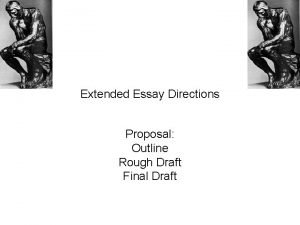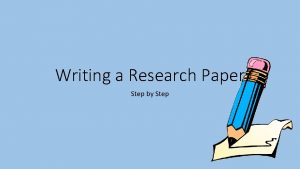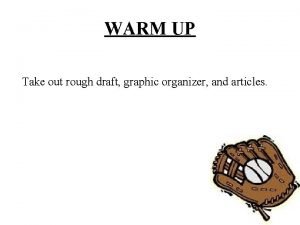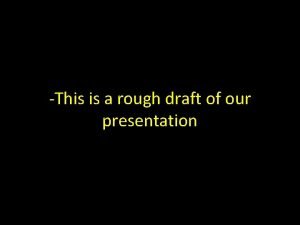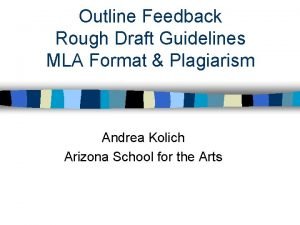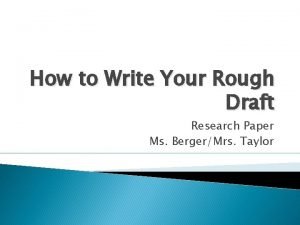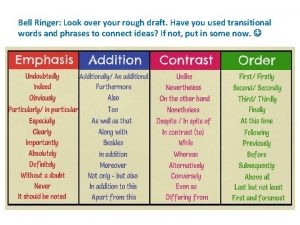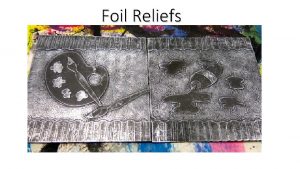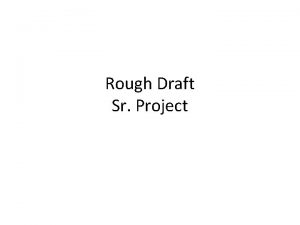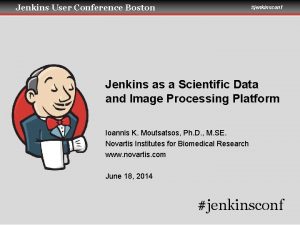Rough Draft to First Draft Jenkins English Purpose






- Slides: 6

Rough Draft to First Draft Jenkins English

Purpose • Why don’t we just start typing after our rough draft? – It is an immutable rule that, however many drafts a piece of writing goes through, it’s quality will exponentially improve. – MLA is easier to read, workshop, and edit. – Having gone through and first draft, your final typed draft will very nearly write itself and you are twice as more likely to catch errors, areas that lack clarity, and the all-important (at least for this assignment) organizational parts to a whole.

Step One • Workshop your Rough Draft (reading from your composition book). Be aware specifically of grammar / conventions errors, clarity, fluency, and ORGANIZATION. – Have at least one question or area in which you want improvement and report this your workshop group before you read. – Someone needs to read the ENTIRE piece aloud so that your ears hear it (not just the voice in your head). – Get some praise and suggestions.

Steps for Writer’s Workshop today • In your groups – Go around the group and BRIEFLY discuss your piece (specifically: strengths, worries or questions about your own essay) – READ ALOUD the piece to the group – Discuss the individual piece after reading (be constructive) – (after everyone has followed these steps, person) Last step: make written comments and corrections on your group members’ pieces.

Narrative Rough Draft to First Draft Directions • You are going to write your FIRST draft on a separate sheet of paper in MLA format. – Double Spaced – Proper Heading – Title • Transitioning from rough draft to FIRST DRAFT will include an awareness, knowledge and correction of the six traits of writing: – Conventions – Fluency (transition words, etc. ) – Organization*** • FIRST DRAFT WILL LOOK (at least slightly) DIFFERENT AND BETTER THAN ROUGH DRAFT

Distinct Differences Rough Draft • Stream of consciousness • Errors are okay • May include too many needless sentences, or be too short • Transitions absent • Puzzle Pieces / parts unclear First Draft • STRUCTURED • Errors still okay, but try to correct. • Opportunity to omit needless words and sentences or add content • Clear THESIS, INTRO, BODY x 3, and CONCLUSION
